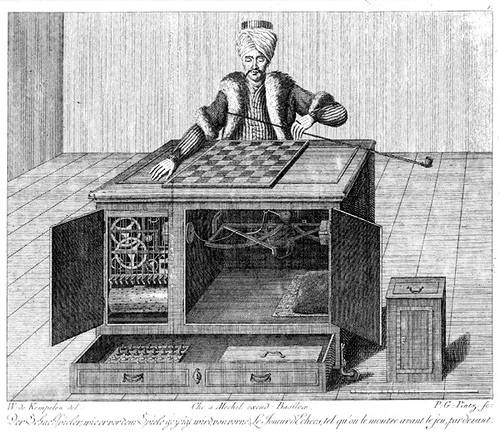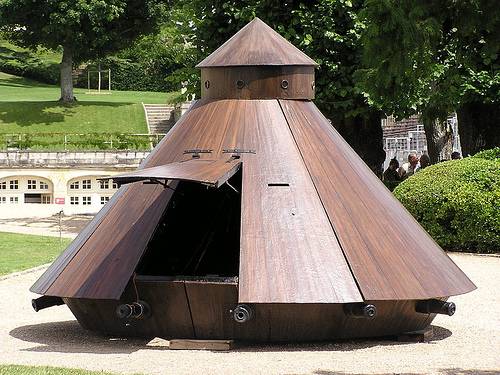Bill Clinton sent only two e-mails during his entire eight-year term in office. One was to test the system; the other was to congratulate John Glenn on his return to space.
Both are archived in Clinton’s presidential library.
Bill Clinton sent only two e-mails during his entire eight-year term in office. One was to test the system; the other was to congratulate John Glenn on his return to space.
Both are archived in Clinton’s presidential library.
Robert Wallace had a noble impulse when he discovered a new species of monkey in Bolivia’s Madidi National Park. Rather than name the species after himself, he would auction off the naming rights to raise money for the park.
The marketers of the world are not so noble: $650,000 changed hands and the new species was named after an Internet casino. It’s officially called the “GoldenPalace.com Monkey.”
Uninspiring land speed records:
Interestingly, these were all set with electric vehicles.

People were willing to believe in a chess-playing automaton as early as 1769. That’s when Wolfgang von Kempelen unveiled “The Turk,” a cloaked and turbaned robot that played over a maplewood cabinet full of clockwork. The contraption toured the courts of Europe, where it beat Benjamin Franklin and Charles Babbage, among many others.
The machine’s secret emerged only in 1854, after the automaton was destroyed in the great Philadelphia fire. The cabinet had contained a human player who followed the game by watching magnets on the board’s underside. He made his moves on a secondary board that transmitted them to the Turk.
Still, it played some good games. Here it beats the crap out of Napoleon Bonaparte, who has White:
1. e4 e5 2. Qf3 Nc6 3. Bc4 Nf6 4. Ne2 Bc5 5. a3 d6 6. O-O Bg4 7. Qd3 Nh5 8. h3 Bxe2 9. Qxe2 Nf4 10. Qe1 Nd4 11. Bb3 Nxh3+ 12. Kh2 Qh4 13. g3 Nf3+ 14. Kg2 Nxe1+ 15. Rxe1 Qg4 16. d3 Bxf2 17. Rh1 Qxg3+ 18. Kf1 Bd4 19. Ke2 Qg2+ 20. Kd1 Qxh1+ 21. Kd2 Qg2+ 22. Ke1 Ng1 23. Nc3 Bxc3+ 24. bxc3 Qe2# 0-1
Someone make a note, in case we ever run out of power:
In 1990 the Internet Engineering Task Force proposed a way to send Internet messages by homing pigeon.
It was used — once — to transmit a message in Bergen, Norway.

One more reason not to mess with Leonardo da Vinci — he designed this armored tank at the Château d’Amboise around 1516.
In the UH-1 Iroquois helicopter, a hexagonal nut holds the main rotor to the mast. If it were to fail in flight, the helicopter’s body would separate from its rotor.
Engineers call it the “Jesus nut.”
You can write a message to future generations at the KEO project. It’ll be launched on a satellite that won’t return to Earth for 50,000 years.
Even more ambitious is the LAGEOS satellite, which will re-enter our atmosphere in 8.4 million years bearing a plaque that shows the arrangement of the continents. Let’s hope our descendants still have catcher’s mitts.
Web sites with a Google PageRank of 10:
And, of course, Google itself.
Douglas Adams’ “rules that describe our reactions to technologies”: